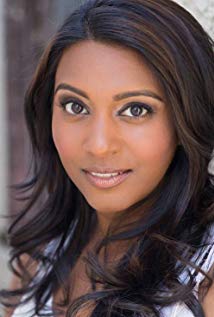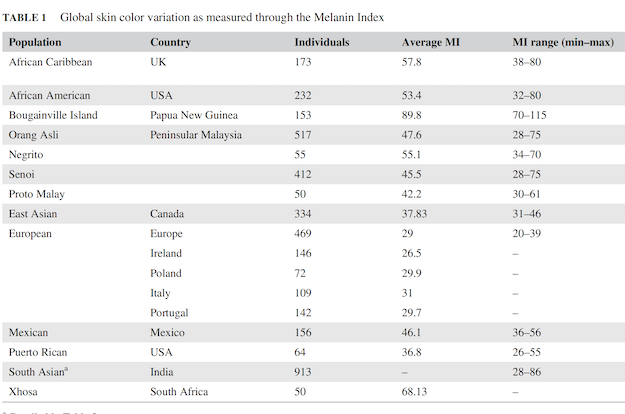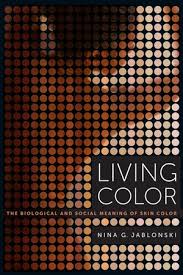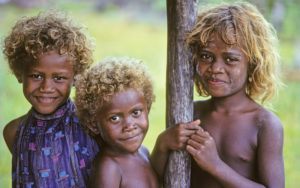
On the individual level who you find attractive and what you find attractive is your own deal. I’m not one to go exhorting anyone to anything. To be frank I find “campaigns” to make x more attractive a bit cringe. It’s like the joke about having to explain to someone that actually you are very attractive!
That being said, it’s interesting to observe cultural patterns, differences, and trends. I do not, for example, perceive women with natural epicanthic folds to be less attractive in any deep sense. But the surgery to create folded over eyelids is a “coming of age” practice in much of Northeast Asia, especially South Korea because it is seen as more aesthetically pleasing. This is a new trend triggered by Western norms, as prior to the past century the more common Asian look with epicanthic folds was considered more beautiful.
This brings me to South Asians, and beliefs, attitudes, and opinions about skin color. Years ago I read that Indian (Tamil) American actress Sharon Muthu was lost a part where she would be playing an Indian character “because she didn’t look Indian.” The director, in this case, was a white American. He admitted she nailed the audition, but optically he didn’t think she’d be plausible as Indian to the audience.
This goes to show that the Bollywood aesthetic has come to define what “Indian” looks like even in the West! Muthu is on the darker side, but not anymore atypical than may lighter-skinned Bollywood celebs.

I am very jaundiced about many aspects of South Asian (which means mostly Indian American really) American culture, but one thing that is striking in contrast to the culture of their parents is that there is little attention to skin color. In fact, there are multiple instances where I’ve heard people say that the parents thought someone they were dating was too dark. This is probably a function of the fact that in an environment where all brown people of various shades are bracketed together, it’s a little ridiculous to make the sort of distinctions that are common in the Indian subcontinent.
Speaking as an outsider to brown culture (my wife is white, most of my close friends are not brown, my children are mixed, etc.) and community, so often when I see an Indian or Pakistani actor or actress they look like older versions of Zayn Malik, the half-Pakistani and half-English teen idol, or an Italian actress with a bigger nose. In general, I laugh, and a lot of American-born/raised brown people I know laugh too.
On the other hand, American South Asians are among the most privileged in the world. The people consuming Bollywood, and Tollywood and all the other woods, are the broad middle and lower classes of India, and their choices do shape what gets put on the screen.
When I was visiting Bangladesh in 2004 many of the posters of actresses I saw were notable for two things:
- They were fairer than the average young Bangladeshi woman
- They were plumper than the average young Bangladeshi woman
My prediction is as Indian audiences get more affluent, and self-confident in themselves, the actors and actressse will start looking more and more like better look versions of the average Indian, rather than cut-rate Jaggus and Jagginas.


